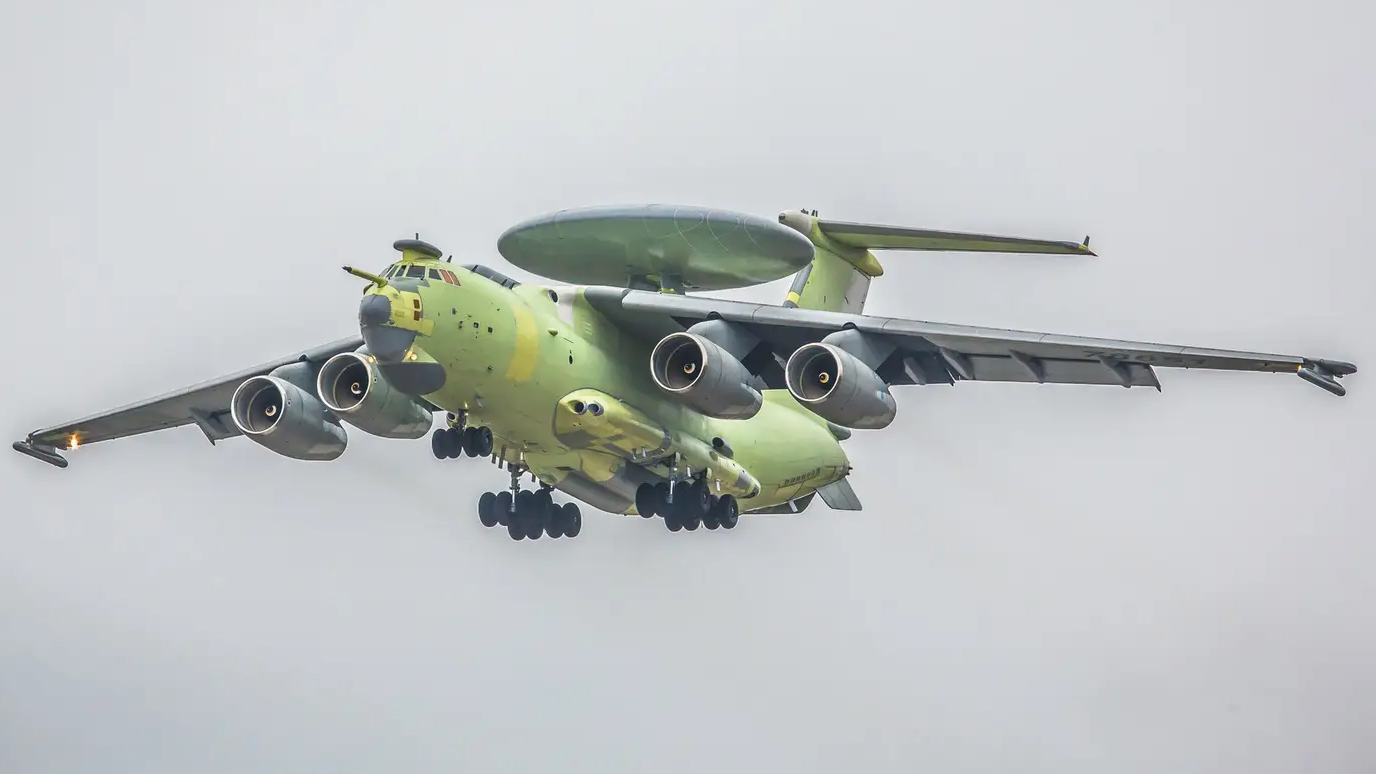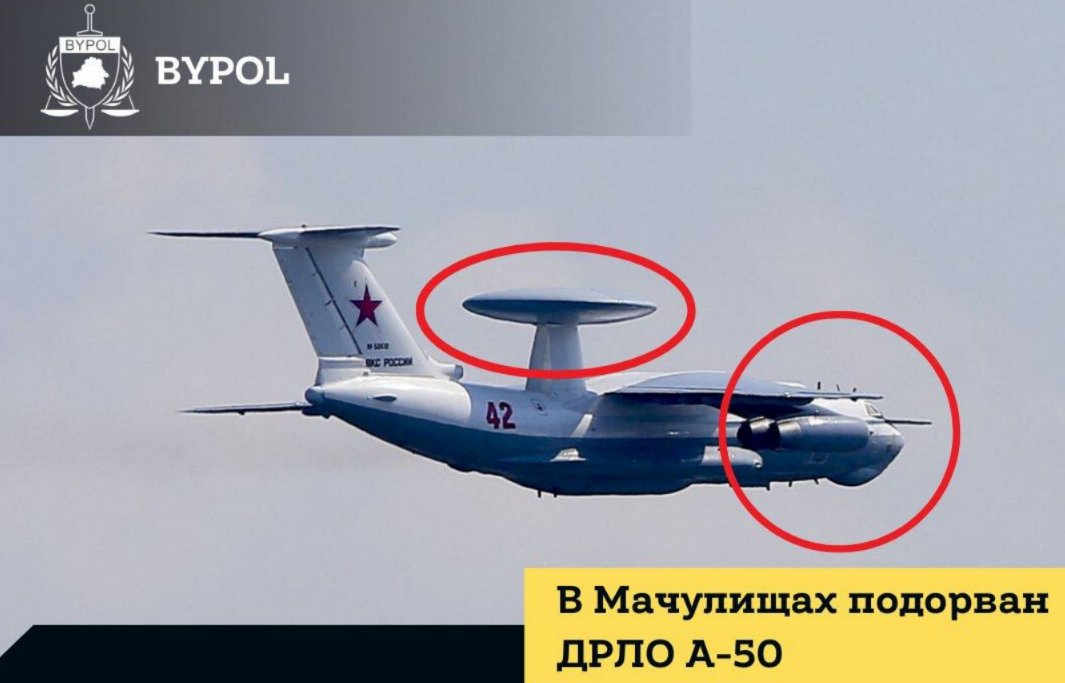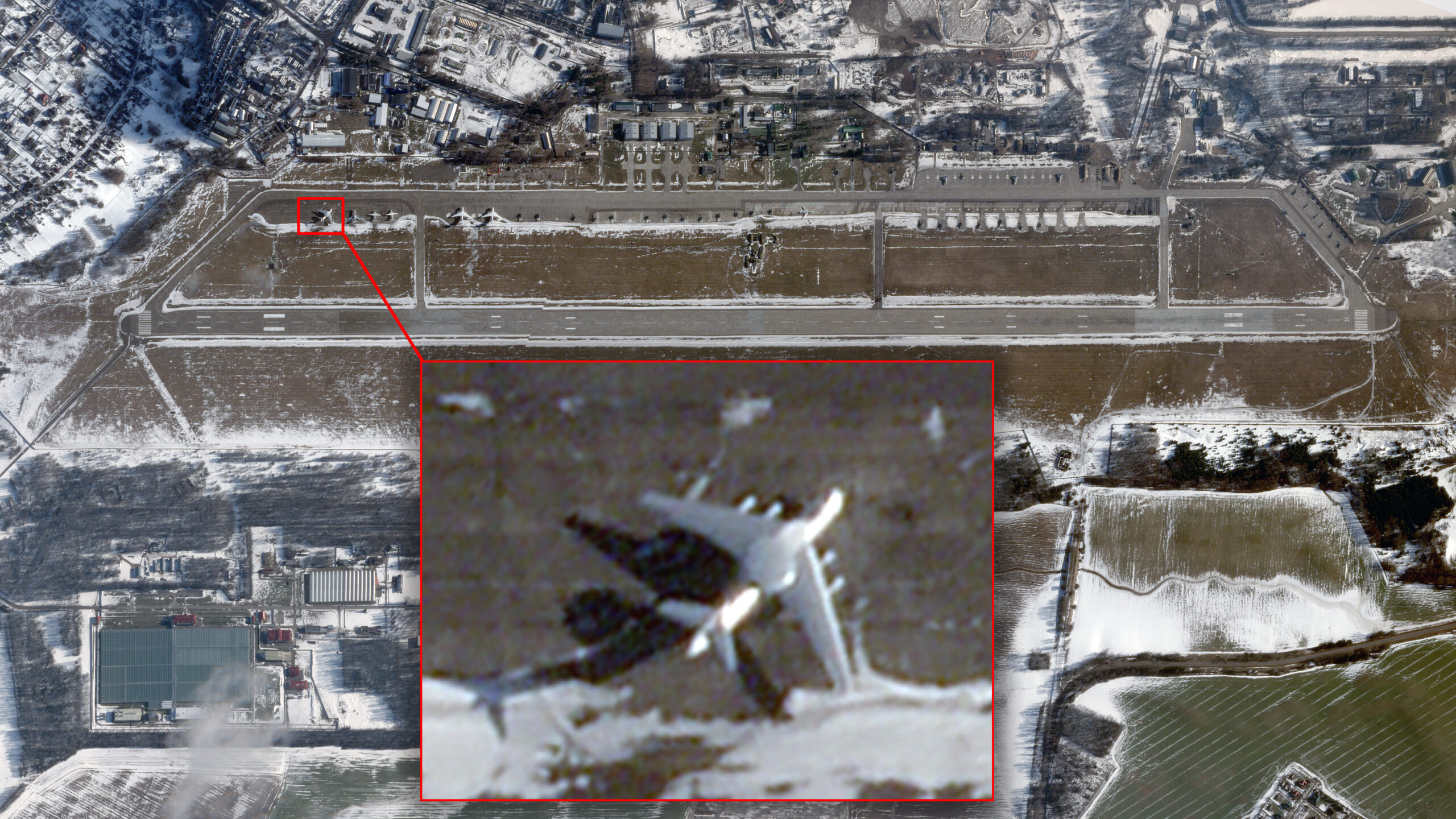There has been quite the buzz this Sunday on social media about a supposed attack on a Russian A-50 Mainstay airborne early warning and control aircraft that is forward deployed to Machulishchy Air Base south of Minsk, in Belarus. We cannot confirm that this attack actually happened or the nature of the damage, if any, to the A-50 — the type has been a staple at the base throughout the war. But if it did occur, it would be a significant loss for the Russian Air Force and, depending on how it was carried out, it could be a sign of a developing front and what’s to come in the now year-old war.
The image seen at the top of this article was taken on February 19. It shows the A-50 in its usual spot at the Belarusian air base. Various claims state that the aircraft, a variant of the Il-76 quad-jet cargo transport, was attacked via drone and damaged if not destroyed. There are also claims that this was done by a partisan group inside Belarus, which would be a significant development if true.

The target here is very important, regardless. The A-50s are very low-density, high-demand assets and are one of Russia’s major advantages over Ukraine in terms of the air war. The A-50 provides general wide-area aerial surveillance and airborne command and control capabilities. Beyond this, and arguably most importantly, they provide the critical ‘look-down’ radar surveillance capability for Russia’s air operations. As such, not only can they generate an ‘air picture’ deep into Ukraine, but this also includes detecting low-flying aircraft which far-off ground-based radars cannot see. This is currently the primary operating regime for Ukrainian aircraft anywhere near Russia’s ‘overlay’ of complex anti-air capabilities that extends deep into Ukrainian-controlled territory.
This look-down capability could become even more important than it already is, especially in defensive applications, should Ukraine gain more standoff strike capabilities in the form of cruise missiles (or quasi-cruise missiles) and long-range drones, which seems more and more likely to become the case.
An upgraded A-50U conducts an air interception exercise with Russian fighters:

The A-50’s capabilities are used in a limited capacity by Russia at present. Roughly, around 10 are thought to be operational in general, with some sources saying the number is actually significantly lower. Even fewer are actually capable of flying missions at any given time. Beyond supporting the Ukraine war, one is usually forward deployed to Syria.
The aging A-50’s far more capable replacement, the A-100, has been delayed. The program is known to have been hit particularly hard by sanctions as a result of this war. You can read all about this situation and the A-100 that aims to replace the A-50 in these past War Zone articles linked here and here.

So even knocking a single A-50 out of service, even if for just a limited period of time, would be a significant loss to the Russian Air Force. If indeed this did occur, how it occurred is maybe most important.
There are claims that the supposed attack was carried out by partisan groups inside Belarus. If this is the case, it could be a new sign of these groups being activated. It’s also worth noting that Ukraine has its own operatives that work deep behind the lines, as well.
The barrier to entry for such attacks is also extremely low, with modified commercial off-the-shelf drones being capable of executing such an operation. A localized attack of the kind being described is very hard to detect and even harder to counter, and Russia is not known to be a leader in counter-UAS capabilities. In fact, its basic tactics have only been adapted in any way to this type of threat after major losses of aircraft.
With Ukraine possibly gaining new long-range strike capabilities, Russian airpower could soon be at greater risk on the ground throughout the region, but having undercover opposition groups operating in close proximity to where they are based is an even bigger threat.
It is totally unsurprising that the A-50 would be at the top of the target list. Its unique value, scarcity, and the capability it provides Russia in its war against Ukraine, let alone its size and predictable location, would have driven its targeting.
Now, if this proves to have actually happened — and it very well could prove to have not occurred or there being no damage to the A-50 even after an attack — the big question is was this largely an isolated event, or just the start of what’s to come? Usually, it is the latter when it comes to these types of revelations in this now year-old war.
There is also the question of potential geopolitical fallout. Strongman Alexander Lukashenko has allowed Russia, of which his country is more-or-less a client state of, to launch its operation against Ukraine from Belarusian territory. He has also allowed Russian air operations to continue from Belarus, including standoff missile strikes, counter-air operations, and sorties of surveillance aircraft like the A-50. But even as Russia arms Belarus in exchange for access and obedience, Lukashenko has stated repeatedly that he will not send troops into Ukraine unless Belarus is attacked. Whether or not a strike like the one today could be considered such an act remains unclear.
This is a developing story, we will keep you updated as it unfolds.
UPDATE: 8:30 P.M. EST—
We wanted to provide a roundup of some of the claims circulating about this supposed attack.
The Russian A-50 was “blown up at the Machulishchi military airfield,” by drones operated by Belarusian partisans opposed to the current Lukashenko government, according to the Telegram channel of BYPOL, an organization of Belarusan military dissidents opposed to the current Lukashenko government.
“As a result of two explosions (the places are indicated in the photo), the front and central parts of the aircraft were damaged, the avionics and the radar antenna were damaged,” the BYPOL Telegram channel reported. “The damage is serious, the plane will definitely not fly anywhere.”

The incident “occurred while snowplows were working near the aircraft. Probably, as has repeatedly happened at Russian military facilities, someone again did not comply with fire safety measures and smoked near the side. Belarusian partisans are consistent in expelling the Nazis from their land.”
The attack was carried out with drones operated by Belarusian partisans, the BYPOL Telegram channel reported.
“These were drones,” BYPOL reported. “The participants of the operation are Belarusians, participants of the ‘Victory’ plan, they are now safe outside the country.”
The head of the “ByPol” association, Alexander Azarov, “said that the operation had been prepared for several months, and expressed the opinion that the current authorities in Minsk will not call this attack an excuse for the direct participation of the Belarusian army in the war in Ukraine,” according to BYPOL.
There was no word about the attacks on the Russian, Belarusian or Ukrainian Defense Ministry Telegram channels.
The pro-Russian WarGonzo Telegram channel reported that it was confirming an explosion took place.
“Urgent Information about explosions near Minsk is confirmed,” WarGonzo reported. “The information is confirmed by the sources of the @wargonzo project in Belarus. Most likely, we are talking about drone attacks on military infrastructure, which can be deployed, including objects of the Russian Aerospace Forces. @wargonzo’s sources compare this attack to the incidents in Saratov. We do not have more specific data. We are waiting for official confirmation.”
Saratov was an apparent reference to suspected Ukrainian drone attacks on Russia’s Engels Air Base in the Saratov region in December. You can read more about those attacks here.
UPDATE: 2/28/23
See the first imagery of the aircraft since the supposed attack in our new post here.
Contact the author: tyler@thedrive.com
